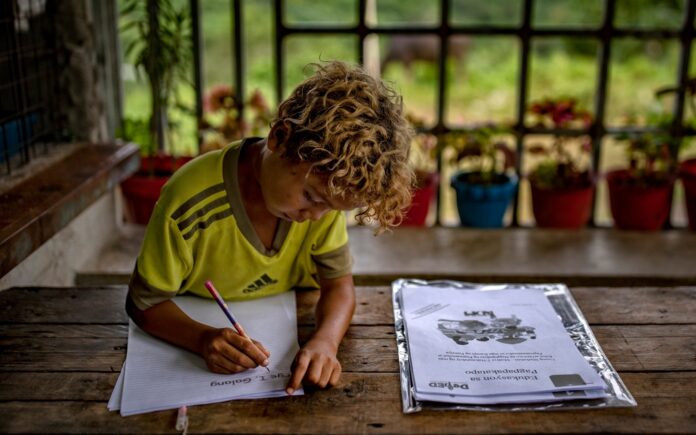Disadvantaged pupils start school behind their better-off peers, and the education system is not succeeding in closing these gaps.
Educational inequalities result in substantial differences in life chances, leaving millions disadvantaged throughout their lifetime. The authors of a report out this morning also find that those who have not been successful at school are left behind by an education system which does not offer the right opportunities for further education.
The research by the Institute for Fiscal studies which is part of evidence gathering for the review, assesses existing evidence and analyses the latest available data. It finds inequalities, such as the disadvantage gap at GCSE, have barely changed over the last 20 years and are likely to increase following the COVID-19 pandemic, which looks to have hit the attainment of poorer primary school children twice as hard as their peers’.
They also found that Inequalities by family background emerge well before school starts.
Just 57% of English pupils eligible for free school meals reached a good level of development at the end of Reception in 2019, compared with 74% of their better-off peers. These inequalities persist throughout primary school.
Children from disadvantaged backgrounds also make slower progress through secondary school.
Fewer than half of disadvantaged children reach expected levels of attainment at the end of primary school, versus nearly 70% of their better-off peers. And of those who do achieve at the expected level, just 40% of disadvantaged pupils go on to earn good GCSEs in English and maths versus 60% of the better-off students.
The relationship between family background and attainment is not limited to the poorest pupils: at every step up the family income distribution, educational performance improves.
For example, while just over 10% of young people in middle-earning families (and fewer than 5% of those in the poorest families) earned at least one A or A* grade at GCSE, over a third of pupils from the richest tenth of families earned at least one top grade.
Ten years after GCSEs, over 70% of those who went to private school have graduated from university compared with just under half of those from the richest fifth of families at state schools and fewer than 20% of those from the poorest fifth of families.
Educational inequalities translate into large future earnings differences.
By the age of 40, the average UK employee with a degree earns twice as much as someone qualified to GCSE level or below.
In part this reflects very slow earnings growth for the low-educated: the most common annual salary for 45- to 50-year-olds with at most GCSEs is between £15,000 and £20,000, which is exactly the same as for 25- to 30-year-olds with these qualifications.
Imran Tahir, a Research Economist at IFS and an author of the report, said: ‘We can’t expect the education system to overcome all the differences between children from different family backgrounds. But the English system could do a lot better. School funding has become less progressive over time, and the resource gap between the state sector and independent schools is widening. Teaching in more disadvantaged schools is less good: while virtually all schools serving the most affluent had “outstanding” or “good” teaching, nearly a quarter of schools serving the most disadvantaged had teaching that “requires improvement” or is “inadequate”.
‘Among pupils who are behind expectations at the end of primary school, fewer than one in ten goes on to earn good GCSEs in English and maths – meaning that we bake in failure from an early age. And the fall-out from the COVID-19 pandemic has moved us in the wrong direction, lowering attainment and widening inequalities. If the government is to meet its mission to have 90% of pupils attaining the expected level at the end of primary school, it needs to prioritise the education system and especially the disadvantaged pupils within it.’
Professor Sandra McNally, a Professor at the University of Surrey, Director of the Centre for Vocational Education Research LSE and an author of the report, said: ‘The education system in England has long prioritised young people taking the well-worn path from GCSE to A level to university. But the options for young people who do not earn good GCSEs at age 16 are limited, confusing and often not very lucrative. Pathways to higher levels of learning are opaque for such learners. The post-compulsory system in general can lead towards narrow choices with little opportunity for second chances later on. Big cuts to adult education budgets over the past two decades have squeezed the sector even further. With challenges like COVID-19 and the Net Zero transition boosting the demand for new skills, providing clear, useful and well-resourced routes in the vocational education sector is more important than ever.’
Josh Hillman, Director of Education at the Nuffield Foundation said: ‘This comprehensive account of educational inequalities in the UK demonstrates the lifelong impact that the disadvantage gap can have on people’s life chances. The evidence on how difficult it is for children to catch up if they fall behind in school is particularly worrying given the impact of the COVID-19 pandemic. If we are to address educational opportunities it is crucial that any reform of the system considers all phases of education and that it addresses the socio-economic factors that lead to disadvantage.’







